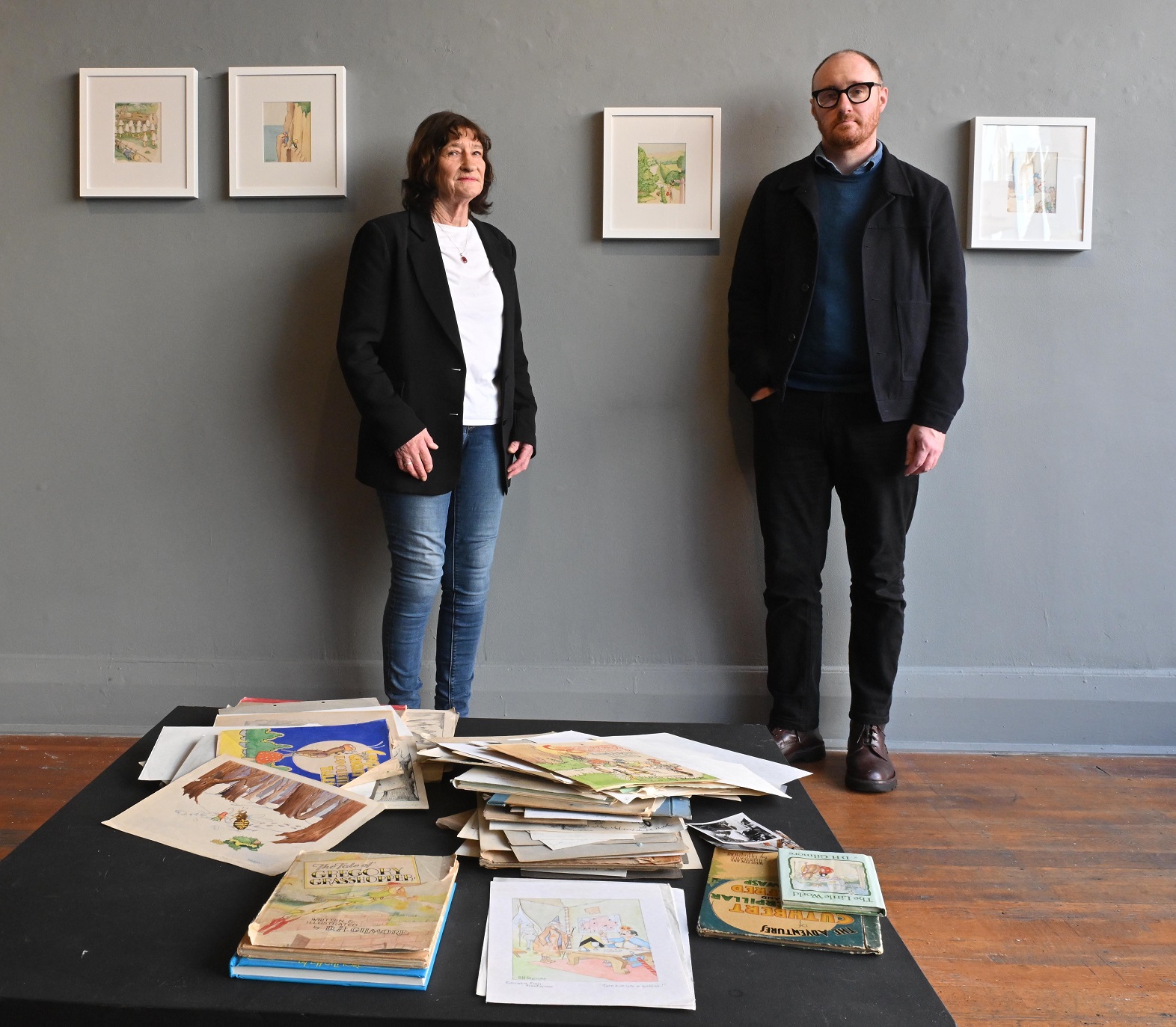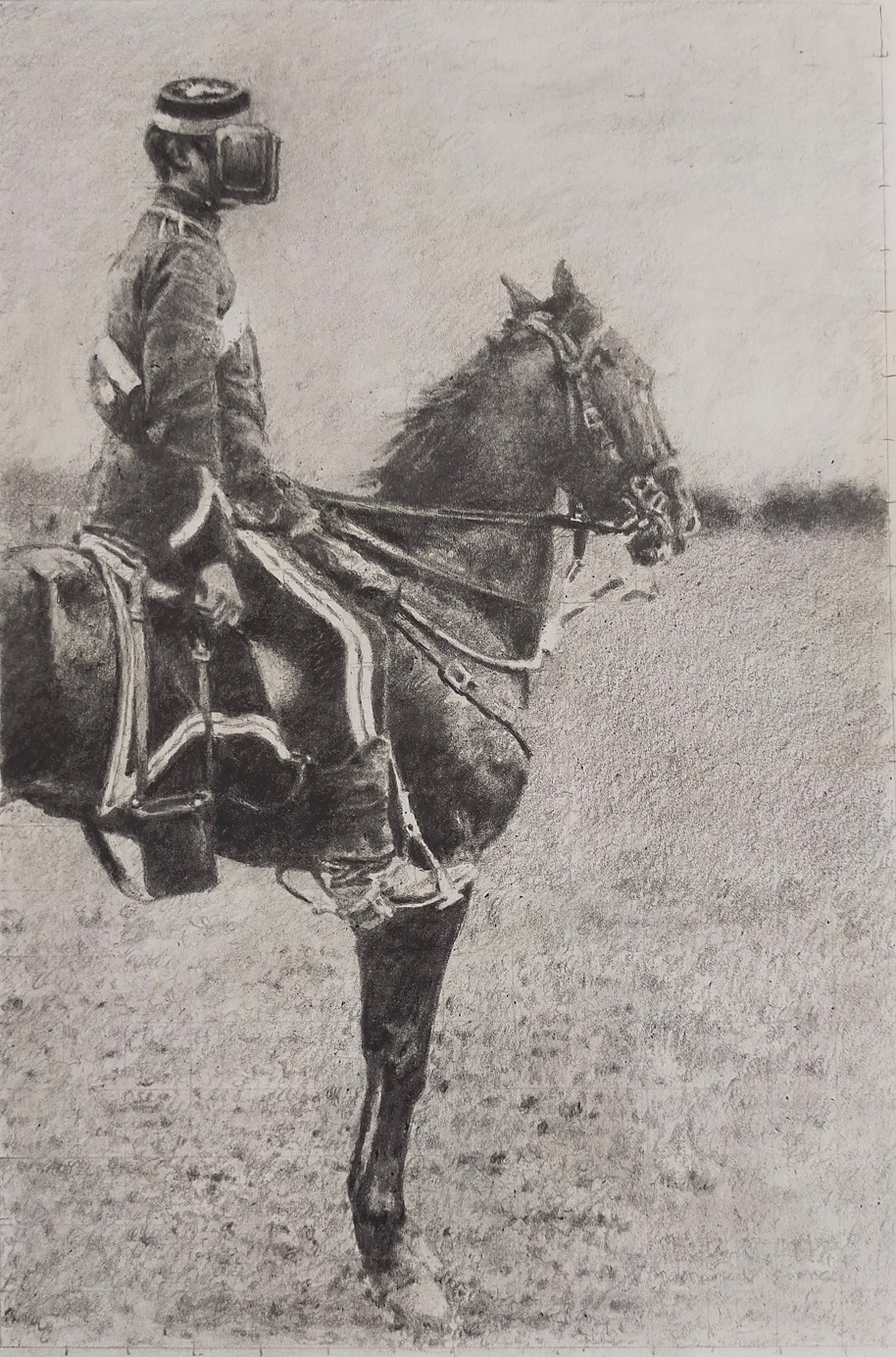
Madill and his mother, Helen Gilmore, talk to Rebecca Fox about showcasing their family history for the first time.
Philip Madill may have only been a baby when his grandfather died, but he has got to know him through his books.
His mother, Helen Gilmore, read to Madill and his twin brother the same stories she grew up with - ones her father, David Gilmore, had written, illustrated and read to her and her sister.
She recollects her father adoring the two boys when they were born. "He was so excited to have twin grandsons."
Gilmore, a school teacher-turned journalist - working at The New Zealand Herald in the 1920s and The Press in Christchurch for 20 years in the 1960s and 1970s - who moved to Australia, working in advertising and serving in its army during World War 2.
He began writing in his spare time creating Cuthbert the Caterpillar, a story inspired by his time on farms in the North Island and a caterpillar that his brother drew on hay bales. That followed after some encouragement from the late NZ Herald cartoonist and artist, Trevor Lloyd, who saw the cadet reporter’s doodles on copy paper at the newspaper.

A series of books followed with characters such as Gregory Grasshopper, Anthony Ant and Christopher Cricket and he became known as a children’s book writer and illustrator. All of the characters’ illustrations were based on real insects, drawn in detail and as accurately as possible from actual specimen or photographs and then adapted to give the individual quirks of each character.
His books were republished in the 1970s as part of an Australian Children’s Classic Collection and a new set of stories of illustrations were commissioned for a series of "Little Books".
The Little World of D. H. Gilmore were published in 1982.
Helen can remember her father, who was 50 when she was born, entertaining them as children for hours with his stories and the imaginary miniature worlds and characters he created to amuse them.
"He was always writing something or drawing something. He loved anything miniature. Birthday cards, he always made our birthday cards. It took me a while to realise other kids' dads didn't write stories and draw pictures."

Many of these stories are coming to the surface again as Helen has decided to showcase her father’s work alongside her son’s art in an exhibition this month.
"I am really delighted that this will be the first time Dad's work's actually just been shown as work and I miss him a lot after 40 years and I'm just thinking how proud he would have been.
"Proud that anyone still remembered him I think. He was a fairly retiring kind of person."
For 40 years Helen has stored her father’s work, including the colour plates from the printing process, only getting a book out to share with family and friends when they had a baby.
"I was getting very fed up actually with storing it and not knowing what to do with it."

"So they used to make these little books with Philip doing the pictures and [brother] Dan writing the stories. I thought, ‘oh great, between them they've inherited their grandfather’."
Madill says he has got to know his grandfather through his books and his mother’s stories.
More recently, as part of his PhD he has been looking at his great-grandfather’s life - in particular, his trips to the Pink and White Terraces in the Bay of Plenty which disappeared in the 1886 eruption of Mt Tarawera.
George Charles Gilmore, who was born in India in 1851, was a talented amateur artist himself whose personal friends included Charles Goldie and Charles Kennett Watkins. He used to take Philip on visits with these artists and to galleries.
"What he remembered about that [visiting Goldie] was the goldfish pond. He must have been about 4."
George Charles was a member of the Auckland Arts Society and painted watercolours.

George Charles had written about his travels to the Pink and White Terraces. He also had a rock he claimed to be from the terraces.
Helen, an archaeologist, says she was relieved to find out that while he was "terribly British" his interest in Maori culture "comes through in what he was writing which relieved me a little bit".
Madill has always been interested in history, even gaining a bachelor’s degree in the subject after leaving art school during his first year.
"Delving through archives and trying to get a sense of ... I guess the history is kind of us, sort of fragmented. So my research has been a little bit of a kind of perceived memory and what they call panoramic memory. Sort of recreate environments through bits and pieces."
The works in the show will be concept drawings in pencil and pastel for an animation work he has been working on for his research project. Ultimately he plans to create four screens arranged in a folding format mixing pieces of his great-grandfathers life and panorama.
"It’s almost like a travel diary. I like to get a sense of something rather tangible and sort of history and memory is quite ambiguous.
"I'm trying to capture it."

"Drawing was something I just did. Drawing was preparatory work."
When he was living in Wellington he found his work became small and detailed as he had little space to spread out.
"I always liked my grandfather’s work - it’s really detailed. Yeah, it's just a little delicate. It's that attention to detail."
Yet his work is completely different in subject matter from his grandfather’s as it often focuses on dystopian worlds and defunct machinery.
Helen says it fits her son’s personality.
"Philip’s very like him in nature. It's that attention to detail I think you got from Dad."

"The trick is to start from the top and work from the bottom so I'm never rubbing my hand over it, things like that. With the pastel works I wear gloves so I'm not smearing stuff all over the paper."
He finds going into his studio in town each day for set hours enables him separation from his work when he needs it.
"There's nothing worse than living with your mistakes. Because I have a tendency to want to go in the middle of the night ‘oh yeah, I'm going to go correct that’ and it'll be a mistake if I do that."
To see:
"Anemoia": Work by D.H. Gilmore and Philip Madill, Olga Gallery, Dunedin, October 11-30











